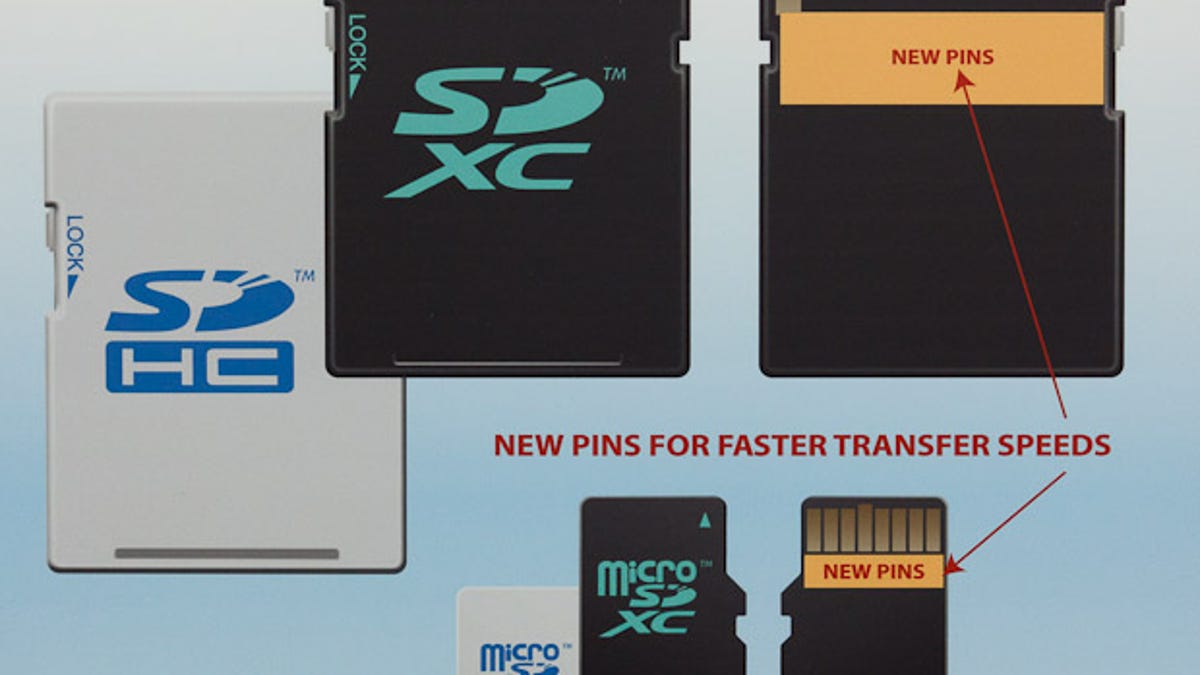SD revamp to triple flash card speeds in 2012
The SD Association should rev its flash card specification in 2011 with faster cards arriving the year after. Also at IFA, Toshiba announces faster cards using today's SD technology.

BERLIN--The SD Card Association is working on a revision to its widely used flash memory card technology that should nearly triple the data-transfer speeds of mainstream SDHC and larger-capacity SDXC cards.
The specification should be complete in the first quarter of 2011, with products coming about a year afterward, said Akihiro Kasahara, a member of the association's marketing committee, in an interview at the IFA electronics show here.
Today's SD cards have data-transfer buses with a maximum speed of 104MB per second, though actual read and write speeds are somewhat slower. The new specification, just called SD 4.0 for now, will increase that to 300MB/sec, said Kevin Schader, the association's director of communications.
Faster data-transfer speeds aren't necessary for everyone, but newer uses make them important. Flash cards are functioning more like solid-state drives in modern gadgets such as Android smartphones and now tablets, too. High-definition videocameras or video SLRs have a tremendous appetite for data. Writing to a card faster frees cameras up for the next shot or take sooner, and of course means it can be faster for people to transfer files to their computers once those support the higher speeds as well.
The SD speeds are increased through the addition of a second row of electrical contacts on the bottom face of the card, though the association is still debating just how many new pins to add, Schader said.
Also up in the air is what to call it. The present top speed is called UHS-I, for its ultra high-speed bus, and it's possible a name like UHS-II might be used for the revamp, Kasahara said. The cards will work in older, slower devices, but naturally new devices will be needed to take advantage of the new cards' speeds.
The SD technology has largely succeeded in consolidating the market behind one format, shouldering aside other options such as MemoryStick from Sony and xD Card from Olympus and FujiFilm. Only CompactFlash remains as an alternative, and there chiefly in high-end SLR cameras where backward compatibility has remained important and where customers are willing to pay more of a premium for maximum capacity and transfer speeds.
SDHC (Secure Digital High Capacity) cards, which store up to 32GB of data, are the dominant variety today, but the newer SDXC (Extended Capacity) specification accommodates up to 2 terabytes. SDXC cards are availble today, but only with capacities of up to 64GB today.
Toshiba's faster new cards
Also at IFA, Toshiba announced a new generation of faster SD cards with the current transfer technology.
Toshiba's SDHC cards this year will reach read speeds of 95MB/sec and write speeds of 80MB/sec with capacties up to 32GB. And the smaller microSDHC-format reached read speeds of 40MB/sec and write speeds of 20MB/sec with capacities up to 16GB. The microSDHC cards now employ the UHC-I data-transfer technology.
The SDHC cards will be available in 8GB, 16GB, and 32GB sizes with mass production starting in November. The microSDHC cards will come in 4GB, 8GB, and 16GB sizes, but Toshiba will only begin issuing samples in November, the company said. It didn't announce prices.
The company left the SDXC cards unchanged. They attain read speeds of up to 60MB/sec and write speeds of up to 35MB/sec with capacities reaching up to 64GB.

